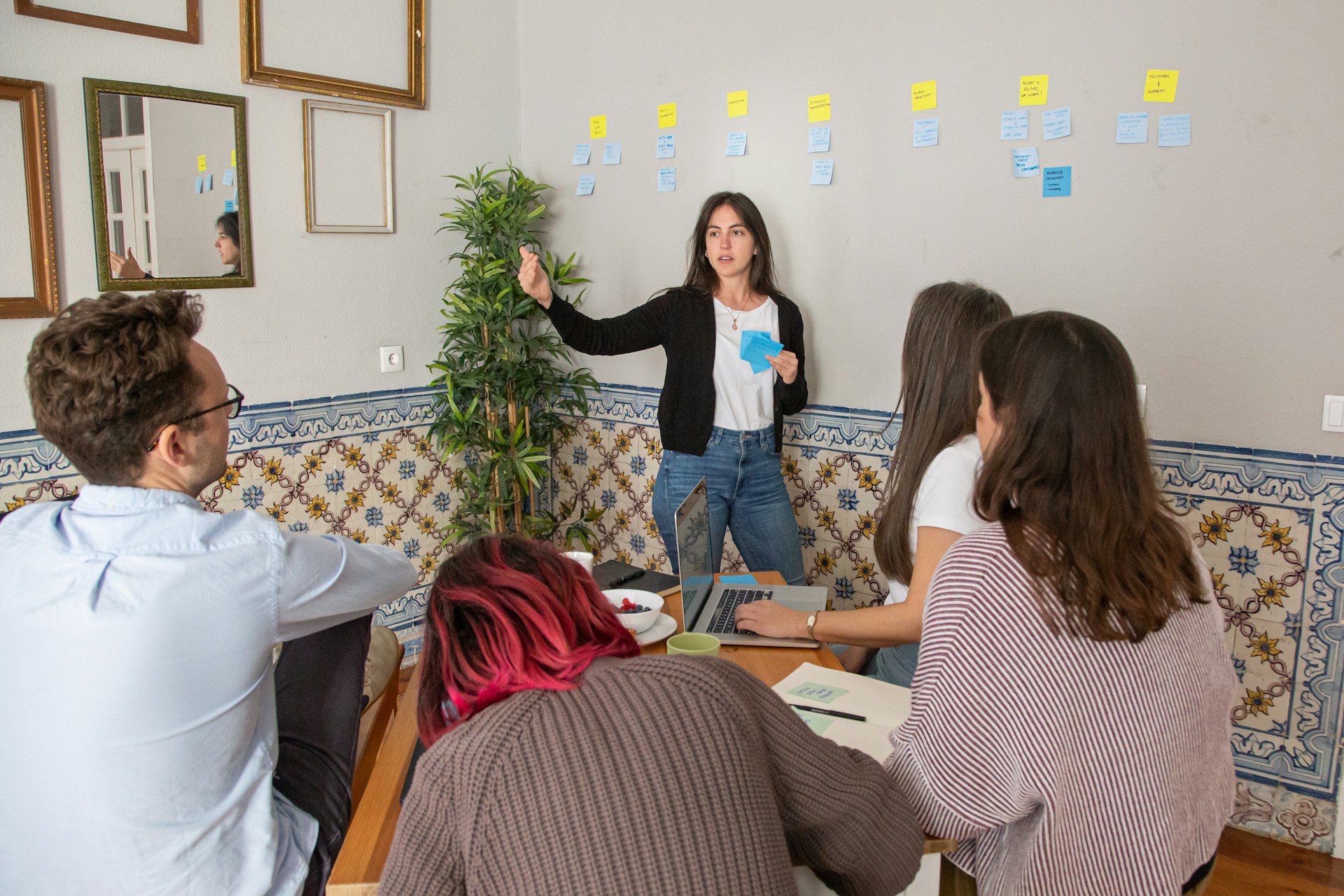How to Create a Collaborative Culture in the Remote Era

Whether you like it or not, every organisation has a culture, and organisational culture affects every aspect of an employees' work experience. This includes their attachment to a company and its success, and the employees' willingness to collaborate with their colleagues. All these factors shape the overall work environment, which employees will either thrive or struggle under, and of course – the bottom line.
A collaborative culture starts with connection
As the adage goes: no man is an island. Sure, it might be a bit cliche, but it's true. Collaboration forms the backbone of every organisation. Good collaboration taps into the strengths of every employee, allowing work to progress efficiently and innovation to develop. But collaboration can only occur when employees are willing to shoulder the burdens of one another.
This can mean reshuffling responsibilities to unblock bottlenecks, being willing to listen to one another, or simply sharing knowledge required for one's co-workers to get their job done. Naturally, such an environment can be difficult to establish when employees are pitted against one another.
Organisations that evaluate employees based on hard numbers alone tend to create such antagonistic environments. When employees are evaluated comparatively, it takes away much of the incentive for them to help one another. Conversely, when employees are encouraged to work towards a common goal, they will be much more likely to assist one another during times of difficulty. That's because helping their coworkers will mean getting to the finish line faster and accomplishing greater things.
Achieving this requires more than just a reshuffling of KPIs. It requires employees to feel connected to their colleagues and the company they work for.
Why employees feel disconnected at the workplace
Remote working has added a new layer of complexity to collaboration. As people work in different locations and time zones, face-to-face contact is at an all time low. While there are definitely plus sides to this, such as an increase in down time that is necessary for quiet work, physical isolation also makes employees more likely to work in silos.
In the end, workers end up doing more work for the same output as significant portions of projects have to be made redundant or heavily altered at the finalisation stage. According to the Economist, employees are working 30% longer than they did before the pandemic while producing the same level of output.
It appears that some of the disconnect can be attributed to employers not taking time to reach out to employees. According to the 2022 Global Culture Report by O.C. Tanner, 45% of employees cite fewer interactions at work and 57% of them are engaging in fewer work activities.
Whether intentional or not, the lack of both virtual and physical facetime can create the impression that one's colleagues and leaders do not care about them, which can cause an employee's motivation to wane over time. Afterall, if nobody else cares, then why should they?
When employees feel disconnected from the workplace, their likelihood of producing quality work falls by 90%.
What does it take to build a healthy, collaborative culture?
As the workplace transforms, so must the way we establish connection with one another. It is true that we can no longer walk up to someone's desk to ask them for assistance like we once did, but the removal of physical distance should not stop us from seeking and providing clarifications to keep things moving along.
Instead of working under synchronous arrangements, where everyone works at the same time and place, organisations today should incorporate asynchronous elements into their work, where another individual can easily pick up where someone else left off – even if they are working in different time zones and locations.
Doing this would mean establishing clear protocols for communication and tapping into media to allow employees to refer to guidelines as required. Because previous methods of communication such as facial expression and tone of voice are now limited, employees should not be afraid to over communicate in emails and tutorial videos. After all, it is much better to have too much information than have crucial information left out.
6 in 10 employees say their social groups at work inspires them to do their best.
However, beyond just work protocols, employees need to feel like part of a community again. Doing this virtually is actually not as hard as it sounds. After all, most of us live a significant portion of our lives on the internet. Playing online games or having casual conversation over conference calls, or even sending memes on common communication channels are just some of the ways to foster a sense of community and belonging.
Create a culture where everyone belongs and feels connected
Understanding someone else takes time and effort. So does understanding ourselves. We should remember that although we might not be able to choose who our colleagues are, we can change how we respond to them and that's where professional coaching can help.
70% of individuals who receive professional coaching report improved levels of productivity and collaboration.
Through scientifically proven processes of reflection and self discovery, CoachHub can help your employees understand their strengths and how to use them in synergy with their colleagues to achieve the best results.
FAQ
Yes, executive coaching plays a key role in retaining and engaging senior leaders by giving them space to reflect, grow, and lead with purpose. Through individualised support, executives strengthen communication, decision-making and resilience — all of which drive engagement and long-term satisfaction.
With CoachHub Executive™, organisations not only see improved leadership performance but also greater alignment, motivation and confidence among their top talent, resulting in higher retention and a stronger leadership pipeline.
CoachHub Executive™ goes beyond one-to-one sessions by integrating technology, measurable insights and continuous learning into every coaching journey. Each executive benefits from personalised matching with certified coaches and flexible session formats to reinforce development between sessions.
While traditional coaching often lacks scalability or measurable tracking, CoachHub ensures impact visibility through data-driven dashboards, 24/7 scheduling flexibility and a consistent, high-quality experience for leaders worldwide, that can be tailored to your organisation's goals.
Yes, executive coaching is delivered across 90 countries in 40+ languages, with localised coach networks that meet the cultural and business needs of global organisations.




.svg)


.svg)





.png)



.jpeg)